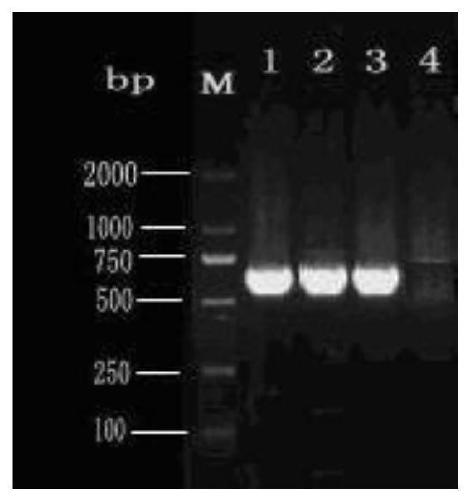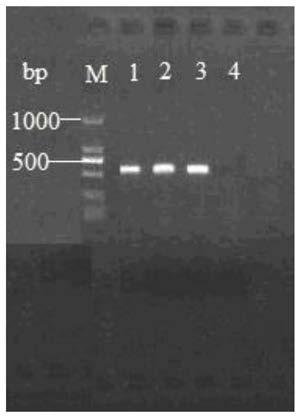Specific gene and molecular identification method of culicolides brevipalpis
A molecular identification and specific gene technology, applied in the field of insect identification, can solve the problems of ITS gene sequence cannot be directly sequenced, ITS mutation speed is fast, and intraspecific gene variation is large, so as to solve the problem of species identification, avoid hybridization or gene penetration, The effect of ensuring accuracy
- Summary
- Abstract
- Description
- Claims
- Application Information
AI Technical Summary
Problems solved by technology
Method used
Image
Examples
Embodiment 1
[0046] Example 1 Obtaining the CO Ⅰ and Cyt b gene sequences of C. breviflora
[0047] In this example, the acquisition of the CO Ⅰ and Cyt b gene sequences of C. brevisiae includes the following steps: extracting genomic DNA from C. breviflora, and design and synthesize primers for the COI and Cyt b genes of C. breviflora. Using the above-mentioned extracted genomic DNA as a template, using the above-mentioned synthetic primers of C. brevisiae CO Ⅰ gene, PCR amplification was carried out to obtain the CO Ⅰ product of C. brevisiae; using the above-mentioned extracted genomic DNA as a template, using the above The synthesized Cyt b gene primer of C. brevifolia was amplified by PCR to obtain the product of C. brevifolia Cyt b. The CO Ⅰ and Cyt b products of C. brevisiae obtained above were detected and sequenced to obtain the CO Ⅰ and Cyt b gene sequences of C. brevisiae.
[0048] specific:
[0049] 1. Preparation of genomic DNA of C. brevifolia
[0050] Take the same batch of other s...
Embodiment 2
[0066] Example 2 Identification of Culicoides to be tested
[0067] The identification of C. midges to be tested includes the following steps:
[0068] S1: Isolate and extract DNA from the Culicoides tissue to be tested;
[0069] (1) The light trap method was used to collect the Culicoides to be tested, and the collected Culicoides to be tested were frozen and sacrificed into specimens and stored directly in 95% alcohol.
[0070] (2) Take out the specimen of C. midges to be tested stored in 95% alcohol, dissected under a dissecting microscope, and make slide specimens for morphological identification except for the chest. After individually numbering the chest of the Culicoides to be tested, make sure to correspond to the slide specimen one by one. If it needs to be stored for a longer period of time, the PCR tube containing the chest tissue part of the Culicoides to be tested should be frozen at -20℃.
[0071] (3) Using a small insect micro-DNA template preparation method, extract th...
PUM
 Login to View More
Login to View More Abstract
Description
Claims
Application Information
 Login to View More
Login to View More - R&D
- Intellectual Property
- Life Sciences
- Materials
- Tech Scout
- Unparalleled Data Quality
- Higher Quality Content
- 60% Fewer Hallucinations
Browse by: Latest US Patents, China's latest patents, Technical Efficacy Thesaurus, Application Domain, Technology Topic, Popular Technical Reports.
© 2025 PatSnap. All rights reserved.Legal|Privacy policy|Modern Slavery Act Transparency Statement|Sitemap|About US| Contact US: help@patsnap.com



